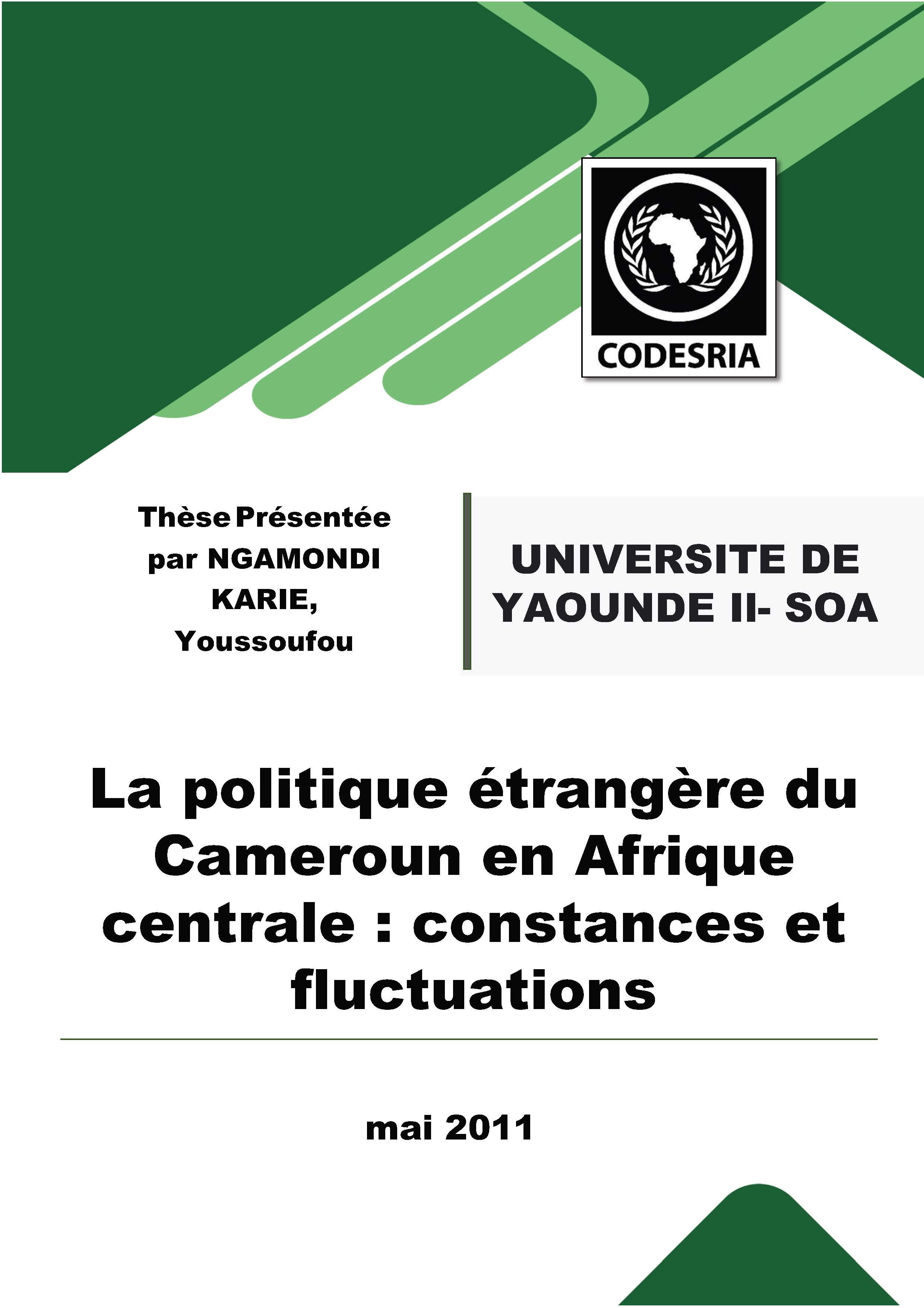La politique étrangère du Cameroun en Afrique centrale: constances et fluctuations
Keywords:
politique étrangère, Cameroun, Afrique centrale, constances, fluctuationsSynopsis
This study is an analysis of the foreign policy of Cameroon in Central Africa treated mainly as comprising member states of CEMAC plus Nigeria and secondarily as comprising the members of ECCAS. Contrary to the arguments that support the idea of the diplomatic inertia of Cameroon in the sub region, this study argues that Cameroon, like most state in international relations is an actor in the international scene as well as in the sub-regional sphere defends its national interest to the best of its geographical, historical and cultural characteristics. She is indeed a rational actor who, in a favorable situation is able by her actions, to maximize her national interests by strengthening regional cooperation through bilateral or multilateral cooperation with her partners and in a negative scenario, will compromise it as long as this serves her national interests. This dualorientation of the diplomatic activities of Cameroon in Central Africa, without being inconsistent, reflects the dynamism of its foreign policy. Dynamic, because in its deployment in the sub-region, it can be oriented and reoriented according to its perceived national interests, challenges and changing circumstances. Thus, its modes of action are, with the countries of the sub-region, constantly prioritised and “re-prioritsed”. In some areas of cooperation, her relations are influenced by circumstances and the perception of her national interests. Thus as function of her national interests, Cameroons relations are more intense with some actors and less with others at different times. In a situation of escalation of conflict in the sub-region, her actions are sanctioned by rational choices. Also, Cameroon prefers diplomatic means to coercive or interventionist approaches. She thus gives first place to pacific means in resolving conflicts within the sub-region, in which case the respect of international law, the use of mediation and multilateral peacekeeping, especially through the UN or alternatively within the framework of sub-regional organizations are prioritised.
Downloads
References
Merle (Marcel), Sociologie des relations internationales, Paris, Dalloz, 1982, 3e édition
Kingston de Leusse (Meredith), Diplomate. Une sociologie des ambassadeurs, Paris,l’Harmattan, 1998, 228p.
Labrecque (G), Les frontières maritimes internationales, Paris, l’Harmattan, 1998, 433p.
Max Gounelle, Relations internationales, Paris, Dalloz, 4e édition.
Plantey (Alain) De la politique entre les Etats. Principes de diplomatie, Paris, Pedone, 2eédition.
Ramel (Frédéric) avec la collaboration de Cumin (David), Philosophie des relationsinternationales, Paris, Presses de la Fondation nationale de science politique, 2002, 408p,p.60.
Renouvin (Pierre), Duroselle (Jean Baptiste), Introduction à l’histoire des relationsinternationales, Paris, Armand Colin, 1991, 530p.
Roche (Jean Jacques), Relations internationales, Paris, LGDJ/EJA 2001, 2e édition.
Ruzie (D), Droit international public, Paris, Dalloz, 15eme édition.
Smouts (Marie Claude) (dir.), Les nouvelles relations internationales. Pratiques et théories,Paris, Presses de Sciences Po, 411p
Sur (Serge), Relations internationales, Paris, Montchrestien, 2000, 2e édition.
Thual (Francois), Méthode de la géopolitique. Appendre à déchiffrer l’actualité, Paris,Ellipses, 1996. Xavier(Guillaume), Droit international public, Cf.www.stoessel.ch/hei/kohen_guillaume.htm
Zaki Laidi, Géopolitique du sens, Paris, Desclée de Brouwer, 1998.






